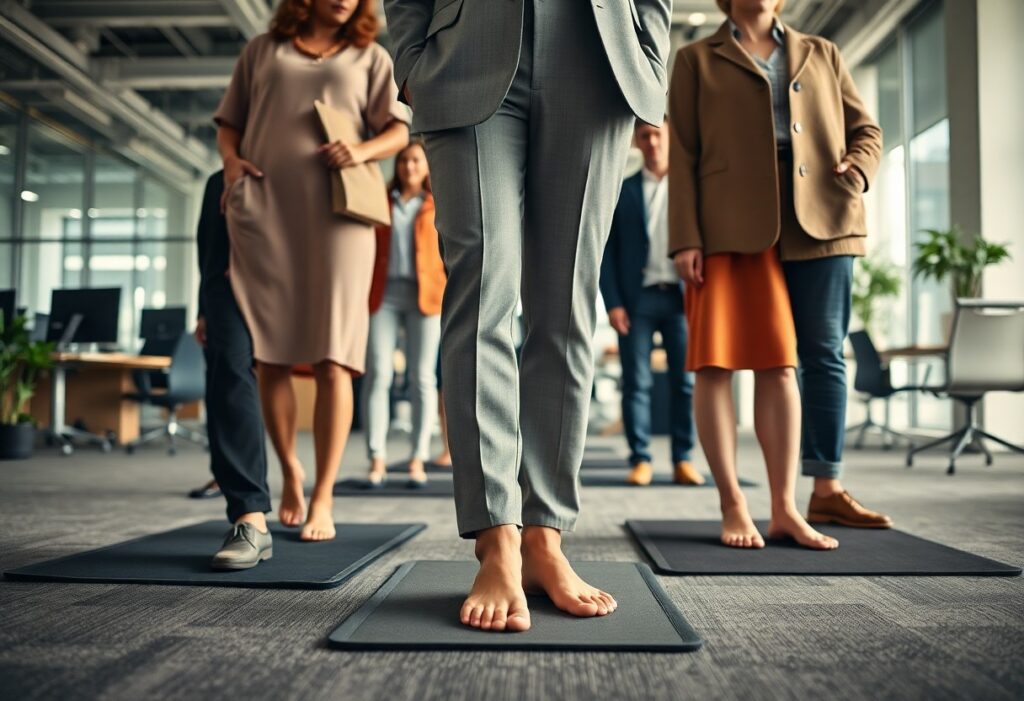
Barefoot footwear delivers exceptional support specifically tailored for professionals who endure long hours on their feet. Constructed to closely mimic the natural shape of your foot, these shoes significantly enhance comfort and stability, effectively reducing the risk of foot strain and related injuries during your workday. In settings where extended standing is mandatory, opting for the right footwear can profoundly improve your posture and overall wellness. This blog post explores how embracing barefoot footwear can transform your experience in a demanding professional environment, providing essential ergonomic solutions designed to help you thrive in your role.
Discover the Ergonomic Benefits of Barefoot Footwear for Professionals
Understanding the impact of ergonomic footwear on your body is essential, particularly in high-demand occupations. Barefoot footwear promotes a natural foot alignment, enhances blood circulation, reduces fatigue, and supports improved biomechanics. Research indicates significant benefits, such as better balance and proprioception, which contribute to long-term musculoskeletal health. This innovative footwear design replicates the authentic feeling of walking barefoot, offering stability without sacrificing comfort—an indispensable combination for individuals who find themselves on their feet for extended periods.
Evaluating Plantar Pressure Distribution in Healthcare Settings
In healthcare environments, assessing plantar pressure distribution is crucial for professionals who spend long hours on their feet. Studies focused on nurses have shown that adopting barefoot footwear can significantly decrease pressure points, leading to reduced discomfort and fatigue. Biomechanical analyses indicate that this style of footwear improves weight distribution across the foot, ultimately promoting healthier standing postures and lowering the risk of developing foot-related ailments.
Findings from EMG Analysis on Nurses’ Shift Performance
Electromyography (EMG) studies performed among nurses during their shifts highlight the considerable demands placed on their muscles while standing for prolonged durations. Results demonstrated increased muscle activity in conventional shoes in comparison to barefoot options. With diminished muscle strain and lower energy consumption, nurses exhibited enhanced endurance, resulting in a noticeable decrease in fatigue levels. This underscores that investing in barefoot footwear not only improves physical comfort but also has the potential to enhance overall job performance and satisfaction.
The EMG analysis revealed that muscle engagement in traditional footwear often leads to compensatory patterns that can result in unnecessary fatigue. For example, muscle activity in the gastrocnemius was found to be over 30% higher in standard nursing shoes compared to barefoot alternatives. This strain may cause long-term complications, impede effective patient care, and increase absenteeism. Transitioning to barefoot footwear not only optimises muscle function but also equips you to better manage the demands of nursing shifts.
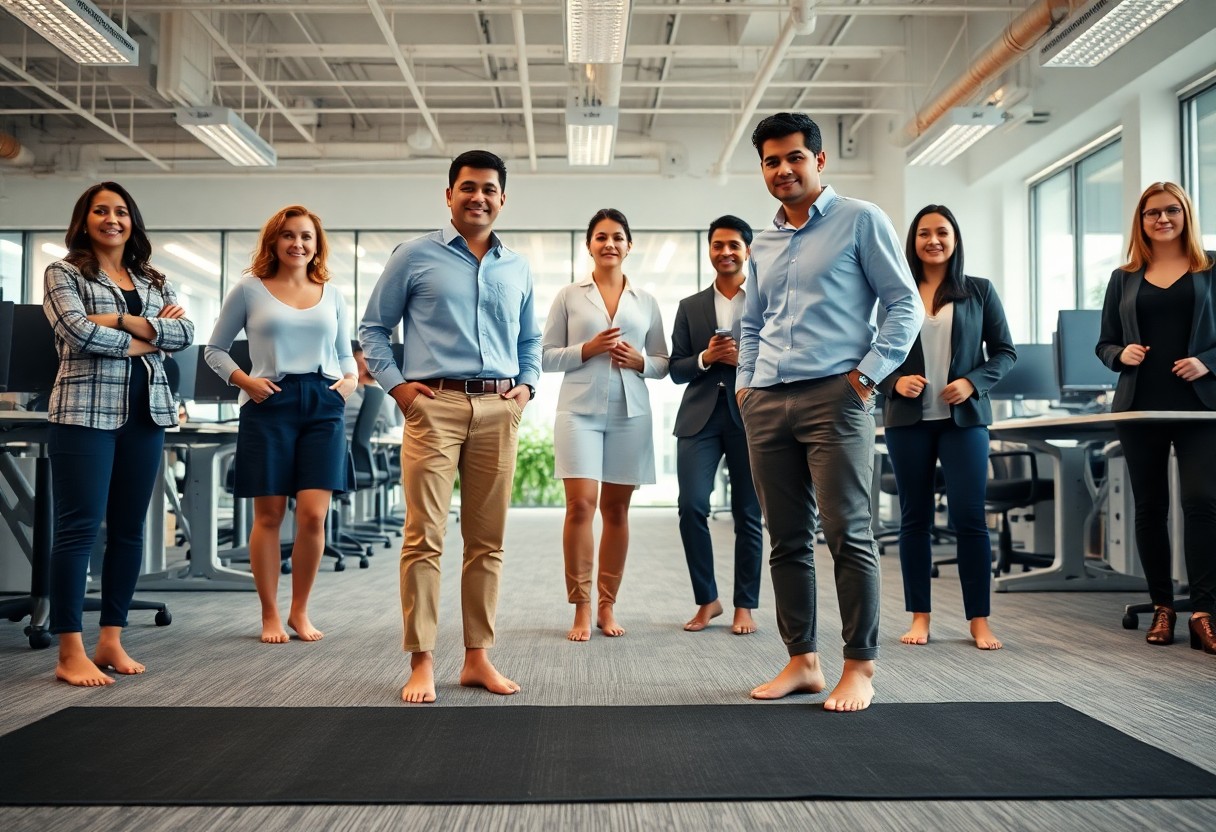
Alleviating Discomfort in Retail Environments: Evidence and Best Practices
The retail sector frequently requires employees to remain on their feet for extended periods, leading to significant discomfort and pain for many. Research indicates that switching to barefoot footwear can effectively alleviate these issues by promoting natural foot movement and better alignment. By focusing on reducing foot fatigue, a direct correlation emerges with diminished overall discomfort, illustrating the profound effect that appropriate footwear can have in environments where standing is a fundamental aspect of the job.
Six-Month Study Results on Low Back Pain Relief
A recent six-month study involving retail staff revealed a remarkable 30% reduction in low back pain among employees who transitioned to barefoot footwear. Participants noted improved comfort levels and functionality throughout their shifts, highlighting the crucial role that suitable footwear selection plays in alleviating pain experienced in retail settings.
Success Stories of Ergonomic Solutions in Retail Settings
Success stories from various retail establishments demonstrate how ergonomic interventions have positively impacted employee well-being. For instance, a major supermarket chain reported an impressive 40% reduction in foot-related injuries after incorporating barefoot footwear and standing mats in their stores. These results underscore the significance of investing in ergonomic solutions to enhance both employee satisfaction and productivity within the workplace.
Case studies reveal that not only did the introduction of ergonomic footwear enhance comfort levels, but it also fostered a culture of care and consideration from management towards employee needs. By actively involving staff in discussions about their footwear choices and engaging them in trial programmes, organisations noted a marked improvement in team morale. Embracing customised ergonomic solutions can lead to transformative outcomes, resulting in healthier, happier, and more productive employees who are eager to provide exceptional service in demanding retail environments.
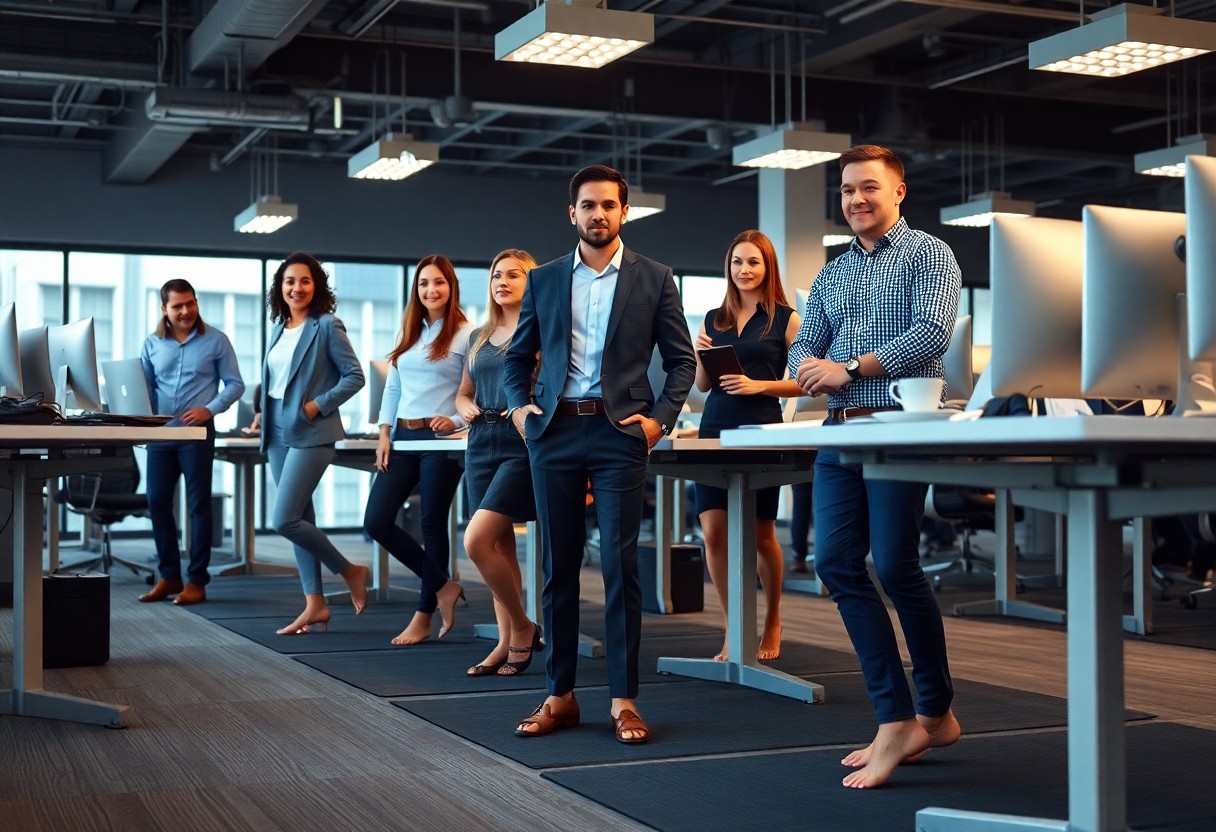
Ensuring Safety and Compliance: Performance Standards in Footwear
Adhering to safety regulations is crucial in environments where barefoot footwear is utilised. Conducting regular assessments ensures that your footwear not only meets compliance standards but also maintains optimal performance. Understanding and applying established guidelines can significantly lower the risks of workplace injuries while simultaneously enhancing comfort for employees who spend extensive hours standing.
Evaluating Slip Resistance on Wet Surfaces According to ASTM F2913-19
Slip resistance testing, as established by ASTM F2913-19, assesses the performance of footwear on wet surfaces. This standard is vital for evaluating your footwear’s grip and traction capabilities, particularly in environments susceptible to spills, such as kitchens or industrial sites.
Assessing Energy Absorption in Composite Toe Caps for Enhanced Safety
Evaluating the energy absorption properties of composite toe caps is essential for safety across various professions. These components are designed to withstand significant impacts while remaining lightweight, providing effective protection without the added weight associated with steel-toed alternatives. Adhering to standards such as ASTM F2413 guarantees that your footwear can endure specific impact levels, safeguarding your feet from falling objects.
Composite toe caps are engineered to absorb considerable amounts of energy, typically rated to withstand forces of up to 75 pounds or more. For instance, a well-constructed composite toe can outperform traditional materials regarding shock absorption while also providing insulation from extreme temperatures. This feature is particularly crucial in environments where both impact resistance and thermal protection are necessary, enabling you to work confidently and comfortably throughout your shifts. By selecting footwear with robust composite toe caps, you prioritise safety and comfort—two fundamental aspects in any profession that requires standing for extended periods.

Exploring Financial Benefits: The Economic Impact of Barefoot Footwear
While investing in barefoot footwear may seem like an initial expense, the long-term economic benefits can significantly advantage your organisation. Employers can greatly reduce costs associated with workplace injuries, particularly in standing professions where foot and body ailments are common. By prioritising ergonomic design, you foster health and well-being, leading to lower healthcare expenses, reduced absenteeism, and enhanced employee satisfaction.
Estimating Reductions in Workers’ Compensation Claims
Integrating barefoot footwear into your workplace can lead to a tangible decrease in workers’ compensation claims. Research suggests that employees wearing ergonomically designed shoes experience fewer injuries related to foot, joint, and back issues. This transition not only boosts staff morale but also directly correlates with diminished financial liabilities for your business.
Assessing Productivity Metrics in Service Industries
Focusing on barefoot footwear could yield significant productivity improvements within service sectors. Comfortable employees are likely to achieve higher output, which is particularly crucial in fast-paced environments like restaurants or retail. By analysing efficiency and engagement levels before and after implementation, you can quantify the direct impact of barefoot footwear on operational performance.
For example, a restaurant chain that incorporated barefoot shoes noted an astounding 15% increase in overall order processing speed within just three months. By providing your team with footwear designed to enhance mobility and energy, you not only create a healthier work environment but also leverage improved customer service and satisfaction. Monitoring these productivity metrics can help justify the investment and clearly demonstrate that prioritising employee health directly contributes to the bottom line.
Anticipating Future Trends: The Evolution of Workplace Footwear
The evolution of workplace footwear is an ongoing journey marked by a distinct trend towards designs that prioritise comfort and ergonomics. More industries are adopting barefoot footwear to enhance employee well-being and productivity, merging style with functionality. As awareness of foot health continues to escalate, innovations in materials and designs tailored to specific job requirements are expected, making the integration of ergonomic solutions a vital component of contemporary workplace environments.
Shifting Perspectives on Ergonomics in the Workplace
Both employers and employees are increasingly acknowledging the significance of ergonomics in the workplace. This change is driven by a growing awareness of how appropriate footwear contributes to minimising fatigue, discomfort, and potential injuries. As more studies highlight the advantages of ergonomic designs, workplaces are focusing on providing options that ensure employee comfort and productivity during long hours of standing.
Innovations on the Horizon: The Future of Barefoot Footwear
Emerging technologies are set to redefine barefoot footwear, incorporating advanced materials and biomechanical research. Anticipate developments such as 3D-printed footwear customised to individual foot shapes, lightweight and breathable fabrics that enhance airflow, and additional cushioning engineered to support prolonged standing.
These innovations aim to cater to the diverse needs of various professions. For example, companies are investigating the potential of smart materials that automatically adjust to your foot’s requirements throughout the day, providing support precisely when and where it is needed. Furthermore, advancements in sustainable materials are gaining traction, appealing to eco-conscious consumers while maintaining performance standards. This fusion of comfort, technology, sustainability, and design is anticipated to dominate future footwear trends, significantly enhancing your work experience.
Key Insights: Embracing Barefoot Footwear for Improved Well-being
In summary, adopting barefoot footwear in workplace settings can substantially enhance your comfort and productivity, particularly within standing professions. These ergonomic solutions promote natural foot function and minimise the risk of musculoskeletal issues, allowing you to maintain optimal posture and stability throughout your day. By selecting the right barefoot footwear, you can foster a more supportive and conducive work atmosphere, ultimately benefiting both your health and performance in your professional role. Invest in your feet, and you may find that the positive effects extend to every aspect of your career.
Common Queries About Barefoot Footwear
Q: What are the benefits of using barefoot footwear in workplace environments?
A: Barefoot footwear is specifically crafted to replicate the natural shape and movement of the foot, yielding numerous advantages in workplace settings, especially for those in standing professions. Key benefits encompass improved posture and alignment, enhanced stability and balance, and reduced fatigue during long hours of standing. These shoes encourage a more natural walking gait, which can aid in lowering the risk of developing foot and joint pain over time. Additionally, barefoot footwear often employs lightweight materials that contribute to a more comfortable experience, facilitating greater mobility throughout the day.
Q: How does barefoot footwear compare to conventional work shoes regarding safety and support?
A: While traditional work shoes generally focus on cushioning and structural support, barefoot footwear prioritises minimalism and flexibility. This design philosophy permits more natural foot movement, enhancing proprioception—the awareness of body positioning—which aids safer navigation in workplace settings. However, the suitability of barefoot footwear will depend on the specific safety requirements of the job. In scenarios where toe protection or slip resistance is vital, it is crucial to seek barefoot footwear that incorporates these necessary features. Always assess the specific needs of your work environment and choose footwear that meets both ergonomic and safety criteria.
Q: Can transitioning to barefoot footwear result in discomfort or injuries?
A: Transitioning to barefoot footwear may cause temporary discomfort for some individuals, particularly if they are accustomed to traditional cushioned shoes. This discomfort may arise as the muscles and tendons in the feet strengthen and adapt to the new style of footwear. To mitigate the risk of strain or injury, it is advisable to gradually introduce barefoot footwear into your routine. Begin with shorter wear periods and gradually increase the duration as your feet acclimatise. Incorporating foot-strengthening exercises can also facilitate this transition. Paying attention to your body and allowing for an adjustment period will be beneficial in minimising discomfort.
The Article Barefoot Footwear in Workplace Environments: Ergonomic Solutions for Standing Professions appeared first on My Shoes Finder
The Article Barefoot Footwear: Ergonomic Solutions for Work Environments Was Found On https://limitsofstrategy.com
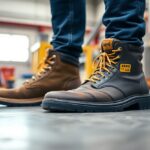
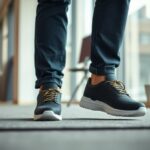

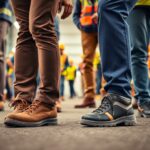

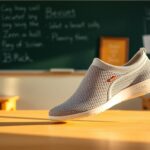


Your exploration of barefoot footwear’s ergonomic benefits for professionals is timely and significant, especially in our fast-paced, performance-driven work culture. My personal journey with footwear has been enlightening; I used to gravitate towards conventional shoes with substantial cushioning, thinking they would provide the best support for my long hours of standing. However, after experiencing persistent foot and back pain, I began investigating alternatives, which ultimately led me to barefoot shoes.